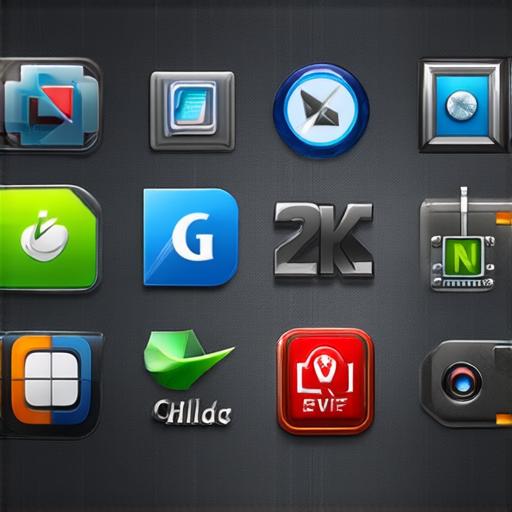In addition to the aforementioned categories, there are also some other related software categories that provide specific functionalities and capabilities.
For instance, network software is designed to facilitate communication and data transfer between different devices on a network. Examples of network software include firewalls, routers, and virtual private networks (VPNs).
Multimedia Software: Multimedia software refers to the programs that enable users to create, edit, and play audio, video, and other types of multimedia content. It provides a wide range of tools and features for creating and manipulating different types of media, including video editors, audio recorders, graphic design software, and 3D modeling tools. Examples of multimedia software include Adobe Premiere Pro, Final Cut Pro, and Autodesk Maya.
Gaming Software: Gaming software refers to the programs that enable users to play video games on their computers. It provides a wide range of tools and features for creating, editing, and running different types of games, including graphics engines, physics engines, game development frameworks, and game controllers. Examples of gaming software include Unreal Engine, Unity, and Xbox Game Studio.
In conclusion, it is essential to understand the difference between application, system, utility, middleware, database, operating system, network, multimedia, and gaming software categories to make informed decisions when selecting the right tools for your needs. Each category provides different functionalities and capabilities that are designed to meet specific requirements and objectives.
When selecting application software, it is important to consider factors such as ease of use, user interface, functionality, and compatibility with your operating system and other applications. Some common examples of application software include Microsoft Word, Adobe Photoshop, and Google Chrome.
System software, on the other hand, is designed to manage and optimize computer resources, including hardware, operating system, and other related tasks. Examples of system software include the operating system (e.g., Windows, macOS), device drivers, firmware, and boot-up programs. When selecting system software, it is important to consider factors such as performance, stability, and compatibility with your hardware and other software.
Utility software provides additional functionality to other applications or system resources, including antivirus programs, file compression tools, screen capture utilities, and system optimization programs. Examples of utility software include Norton Antivirus, WinZip, and CCleaner. When selecting utility software, it is important to consider factors such as ease of use, functionality, and compatibility with your operating system and other applications.
Middleware software enables different applications to communicate with each other and share data and resources efficiently. Examples of middleware include message queues, virtual machines, and web services. When selecting middleware software, it is important to consider factors such as scalability, performance, and compatibility with your operating system and other applications.
Database software provides a structured way to manage and access large amounts of information, allowing users to query, analyze, and report on data quickly and easily. Examples of database software include MySQL, Oracle, and Microsoft SQL Server. When selecting database software, it is important to consider factors such as scalability, performance, and compatibility with your operating system and other applications.
Operating system software manages the computer’s hardware, software resources, and other related tasks. Examples of operating system software include Windows, macOS, and Linux. When selecting operating system software, it is important to consider factors such as user interface, performance, stability, and compatibility with your hardware and other applications.

Network software facilitates communication and data transfer between different devices on a network. Examples of network software include firewalls, routers, and VPNs. When selecting network software, it is important to consider factors such as security, scalability, and compatibility with your operating system and other network devices.
Multimedia software enables users to create, edit, and play audio, video, and other types of multimedia content. Examples of multimedia software include Adobe Premiere Pro, Final Cut Pro, and Autodesk Maya. When selecting multimedia software, it is important to consider factors such as functionality, ease of use, and compatibility with your operating system and other applications.
Gaming software enables users to play video games on their computers. Examples of gaming software include Unreal Engine, Unity, and Xbox Game Studio. When selecting gaming software, it is important to consider factors such as graphics engine capabilities, physics engine performance, and game development framework compatibility with your operating system and other software.
